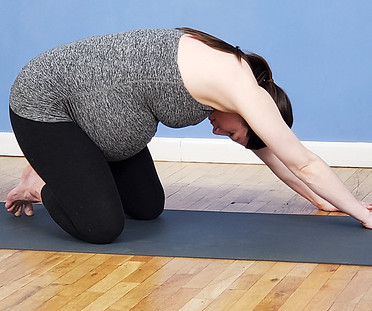Pelvic Health and Pregnancy
PELVIC FLOOR PHYSICAL THERAPY
Pelvic floor PT is a branch of orthopedic PT devoted to dealing with problems specific to the pelvis and genital organs including: urinary/fecal incontinence, pelvic organ prolapse, genital pain, painful intercourse, interstitial cystitis, lichen sclerosis, and vaginal scar tissue from episiotomies or tears usually from childbirth.
Pelvic floor physical therapists are specially trained to internally evaluate and treat the muscles of the pelvic region to help address the above issues. Many people still do not realize that excellent treatment options exist for these types of problems for females and males.
POSTPARTUM PHYSICAL THERAPY
In Other Industrialized Countries postpartum patients are often seen by a physical therapist to address pain issues, teach proper body mechanics for handling a new baby, and to help achieve a faster
recovery. Physical therapy can be a valuable tool to empower patients during the transition to parenthood
TYPICAL PRE/POSTNATAL ISSUES
-
Back & Neck pain
-
Wrist & Hand pain
-
Pelvic pain
-
Pubic bone pain
-
Sacroiliac joint pain
-
Coccyx pain
-
Hip & knee pain
-
Foot pain
-
Diastasis recti (abdominal separation)
-
Vaginal pain
-
Painful intercourse
-
Urinary/fecal incontinence
-
Pelvic Organ Prolapse
-
Abdominal muscle weakness
-
Umbilical hernia
-
Scar tissue (vaginal, c-section, or other)
-
Cesarean section rehab
-
Poor posture

PRENATAL PHYSICAL THERAPY
Pregnancy is a time when the body is undergoing many physical changes at a very rapid pace. Major
postural changes occur during pregnancy which can add pressure to the spine and joints. This pressure
can cause muscles to tighten and old injuries to flare up. Hormonal changes also cause a softening of
ligaments and a loosening of the body’s joints. This is necessary so that the body can accommodate the
growth of the fetus and have mobility for delivery, but this extra laxity can cause problems for many
women as the pelvic joints often become hypermobile, and some women may need physical therapy
support to manage pain.
A UNIQUE METHOD
Unlike physical therapy sessions at most clinics, therapists at Debra Goodman Physical Therapy will spend an hour with each patient individually. Patients will never feel rushed. Treatment will be individualized to each patient’s particular needs.
ASSESSMENT OF THE WHOLE PERSON
The region where people have symptoms is often not where the source of the problem lies. Many traditional clinicians only treat the area where the pain is located and never get to the root of the problem causing pain to return. Patients treated at Debra Goodman Physical Therapy will have the benefit of an examination of the whole body, not just the injured site. In addition, a person’s lifestyle, occupation, and emotional state will be taken into account when prescribing treatment regimens.
HANDS-ON APPROACH
Through the use of manual therapy techniques including myofascial release, deep tissue massage, joint mobilization, muscle-energy techniques, and cranial sacral therapy, proper body alignment is restored, and then patients are instructed in a specific exercise program tailored to their individual needs.